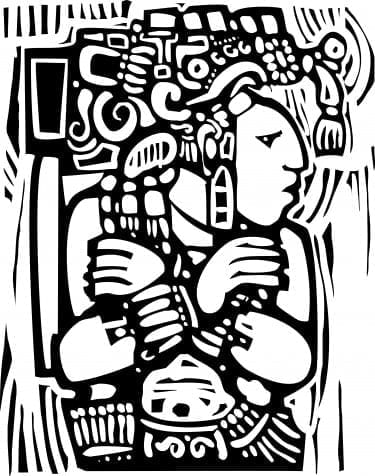
As a doctoral student in anthropology at Tulane University in the late 1970s, Thomas Babcock traveled to the highlands of Guatemala to join an archaeological excavation at Utatlán, a Mayan community conquered by Spain in 1524. Before it was invaded, Utatlán’s K’iche’ Maya elite possessed the Popol Wuj, a sacred book and important document on Mayan history. The excavation sought to draw correlations between the book, other documents and the archaeological evidence, revealing aspects of Mayan life and culture.
Babcock, D.O.’88, Ph.D., wrote his dissertation on the project; then life intervened. Guatemala’s civil war, which began in 1960 and persisted 36 years, took the lives of hundreds near the dig, including some whom his team worked with. Babcock himself was once taken into custody by soldiers for an interview with “military intelligence, with what we would call the leader of the death squad,” he says.
“It went okay since I had papers, but my wife, Phyllis, kept overhearing townspeople referring to me in the past tense, and wondering if she would take our baby” – daughter Leslie – “and return home,” he adds.
With a wife, child and the continued Guatemalan unrest, Babcock became a consultant for the oil and gas industry in Colorado. Then a world surplus of oil flattened its price and dried up demand for his services. A desire to work more with people led him to medicine and DMU, then the College of Osteopathic Medicine and Surgery (COMS). He graduated and established a family practice in Jefferson, IA. In 2005, he and Phyllis moved to Pennsylvania, where he now serves as associate director of scientific publications, medical affairs, with Shire Pharmaceuticals.
That gave him a more predictable work schedule with usually free evenings and weekends, which let him tackle some unfinished business: publishing his dissertation.
“I’d kept all my data and had the time to go back and look at it,” he says. “I had the obligation and opportunity to get it published.”
That wasn’t just a matter of blowing the dust off its cover. Babcock spent three and a half years updating his research. He returned to Guatemala and reconnected with Robert Carmack, an ethnohistorian, now professor emeritus at the State University of New York, Albany, and the “driving force for the study of the K’iche’ Maya,” Babcock says.
The result: Last year, the University Press of Colorado published Utatlán: The Constituted Community of the K’iche’ Maya of Q’umarkaj, a 400-page exploration of Mesoamerican anthropology, archaeology and enthnohistory. In his foreword in the book, Carmack praises Babcock’s work as “a major step forward in understanding the sociocultural characteristics of one of the leading Mesoamerican centers at the time of the Spanish invasion.”
Babcock notes that anthropology, the study of humans past and present, draws from medicine and the biological and physical sciences. Dubbed “Indiana Babcock” by his COMS classmates for his archaeological experiences, he continues to use his thorough writing skills, rooted in his student days, in his work with medical and scientific publications.
“Taking notes for my class’s note pool financed a lot of my education at COMS,” he says.

